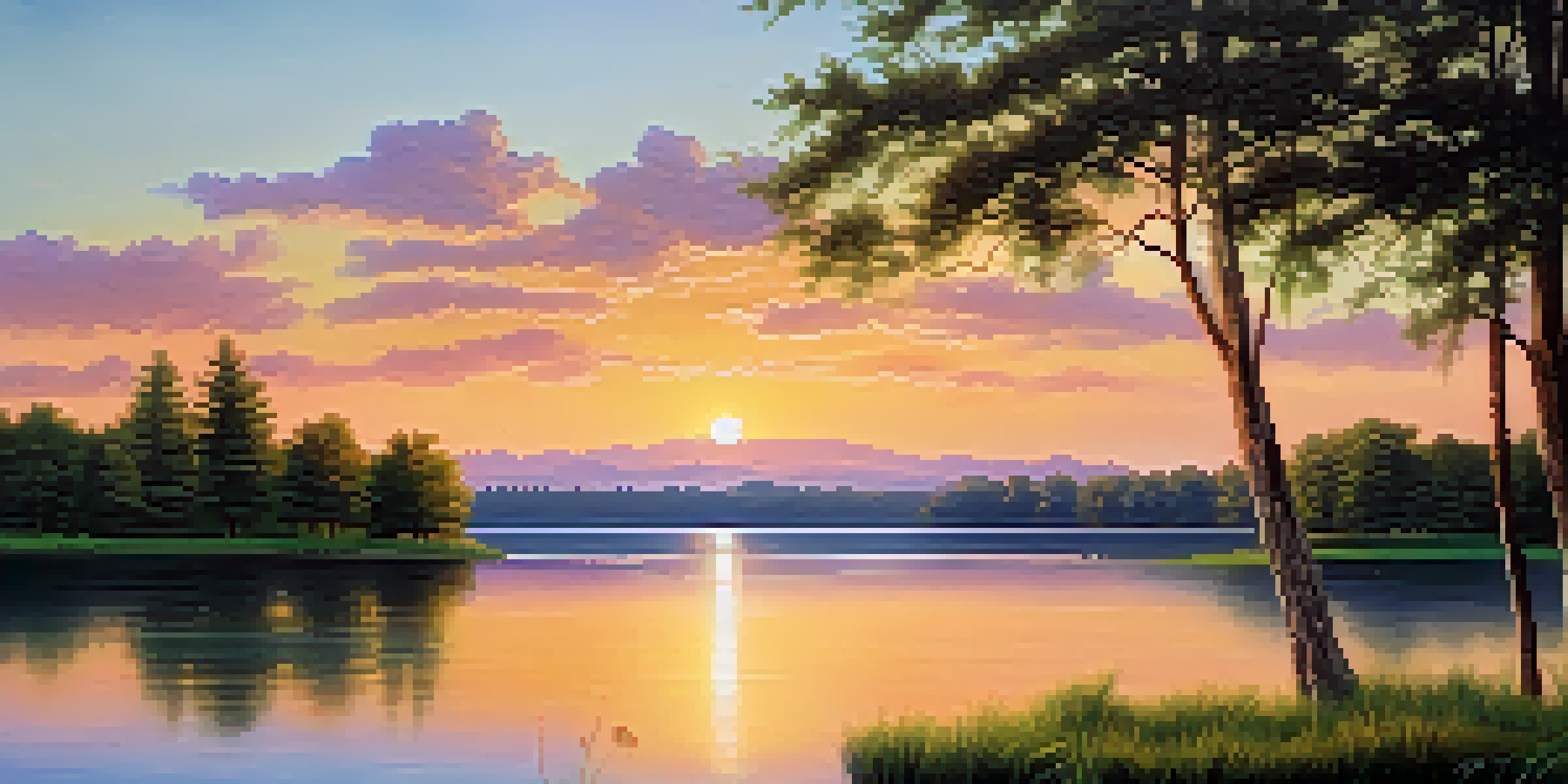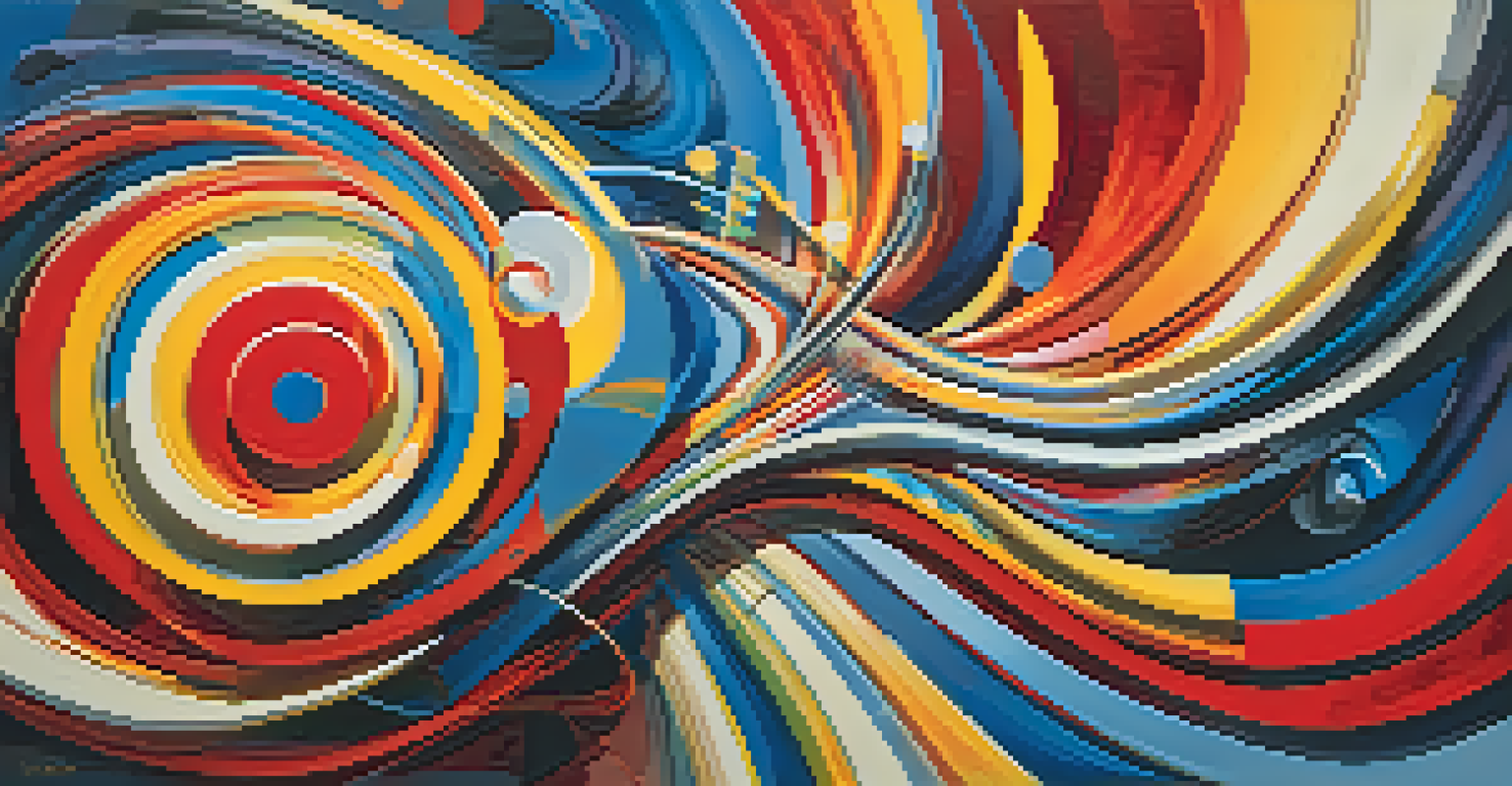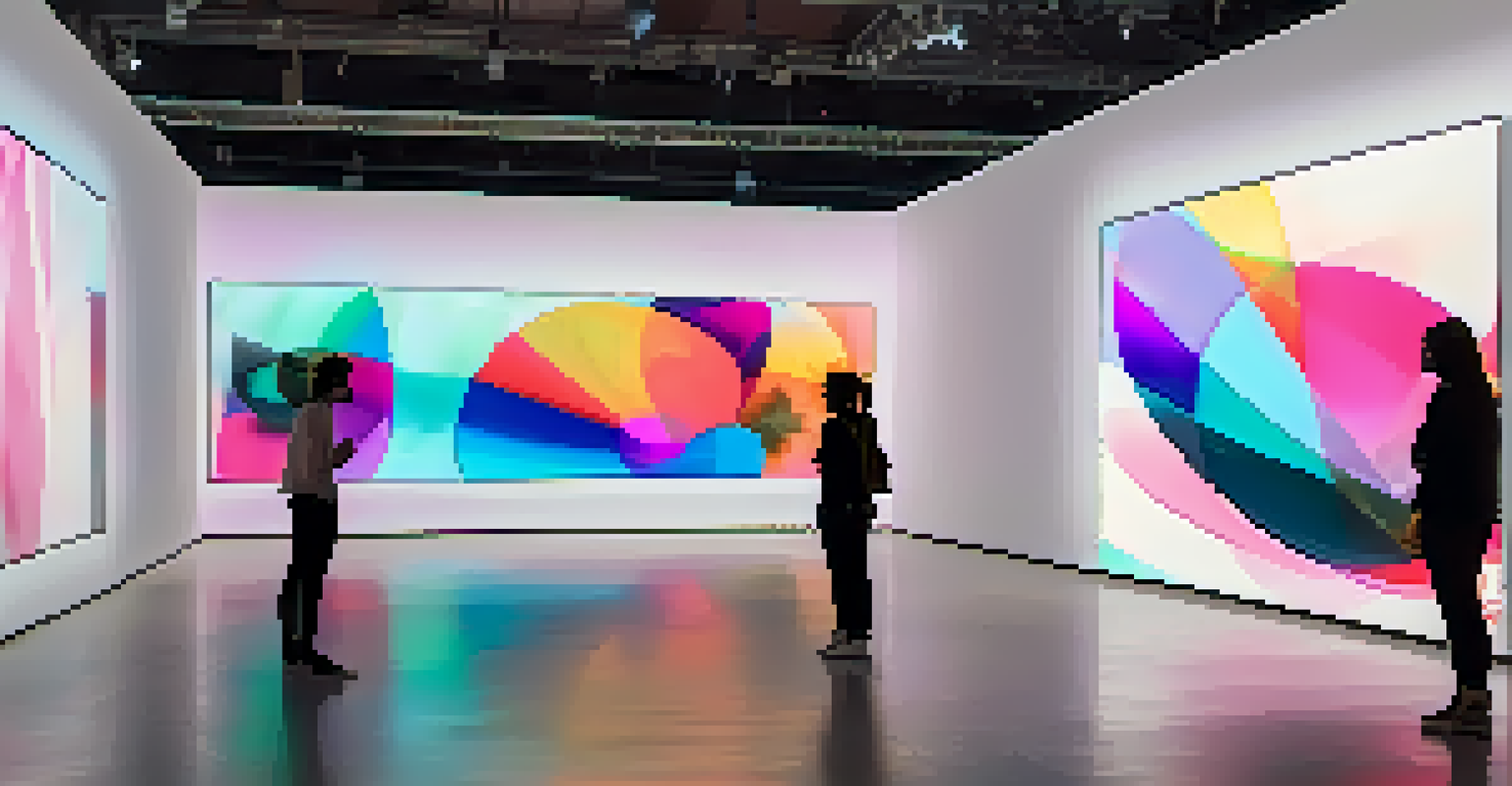Soundscapes: Translating Music into Visual Art Narratives

Understanding Soundscapes and Their Artistic Impact
Soundscapes encompass the unique auditory environments that surround us, blending music, nature, and urban sounds. These sonic layers evoke feelings and memories, much like a favorite song can transport you back in time. Artists often draw inspiration from these soundscapes, transforming auditory experiences into visual narratives that tell compelling stories.
Music is the shorthand of emotion.
The relationship between sound and art is deeply rooted in human experience. Just as a painter uses colors to convey emotions, a musician employs notes and rhythms to evoke similar feelings. This connection creates a rich canvas for artists to explore how sound can be visually represented, providing a fresh perspective on both mediums.
By translating soundscapes into visual art, creators open up new avenues for storytelling. This practice not only enriches the art form but also invites viewers to engage with art on a sensory level, sparking imagination and curiosity. In a world dominated by visuals, this interplay between sound and sight can be a transformative experience.
The Role of Music in Shaping Visual Narratives
Music has a profound ability to influence our emotions and perceptions, making it a powerful tool for artists. When artists incorporate musical elements into their visual narratives, they create a multi-sensory experience that resonates with audiences. For instance, a painting inspired by a lively jazz piece might burst with vibrant colors and dynamic shapes, mirroring the energy of the music.

Additionally, tempo and rhythm can guide the flow and structure of a visual piece. Just as a song unfolds in verses and choruses, an artist can use similar pacing to convey narrative arcs within their artwork. This technique allows viewers to experience the visual narrative in a way that feels both familiar and innovative.
Soundscapes Inspire Visual Art
Artists transform auditory environments into visual narratives, enriching storytelling through the interplay of sound and sight.
The blending of music and visual art not only enhances storytelling but also fosters a deeper emotional connection. Viewers may find themselves reflecting on their own experiences with music while engaging with the artwork, creating a dialogue between the two forms. This synergy ultimately enriches the overall artistic experience.
Translating Sound into Color: Techniques and Approaches
Artists employ various techniques to translate sound into color, often using personal interpretation as a guide. For example, an artist might listen to a classical symphony and visualize the music as a swirling mix of blues and golds, inspired by the emotional highs and lows of the piece. This process is highly subjective, allowing each artist to bring their unique perspective to the canvas.
Art is the most beautiful of all lies.
Color theory plays a crucial role in this translation, as different hues can evoke specific feelings. Warm colors like reds and oranges might represent excitement or joy, while cooler tones like blues and greens can convey calmness or sadness. By understanding the psychological impact of color, artists can more effectively translate the essence of sound into visual form.
Moreover, some artists experiment with mixed media to further enhance the connection between sound and sight. By incorporating elements like fabric, found objects, or even digital tools, they create dynamic pieces that resonate with the auditory experience. This innovative approach not only showcases creativity but also challenges traditional boundaries within the art world.
The Intersection of Technology and Sound Art
In recent years, technology has revolutionized how sound and visual art intersect, offering new platforms for expression. Digital tools allow artists to create immersive experiences where soundscapes and visuals coexist, engaging audiences in unprecedented ways. Virtual reality, for instance, can transport viewers into a world where they can see and hear the art in a fully interactive environment.
Additionally, software programs enable artists to manipulate sound and visuals in real-time, crafting experiences that evolve with audience participation. This dynamic interaction not only enhances engagement but also emphasizes the fluidity between different art forms. Artists can invite audiences to contribute to the soundscape, making them active participants in the creation process.
Music Shapes Visual Narratives
Incorporating musical elements into visual art creates a multi-sensory experience that deepens emotional connections with audiences.
As technology continues to advance, the potential for merging sound and visual art only grows. Artists are now exploring multimedia installations that blend video, sound, and physical art, creating holistic experiences that challenge conventional boundaries. This evolution showcases the boundless possibilities of artistic expression in the digital age.
Case Studies: Artists Bridging Sound and Visuals
Several contemporary artists exemplify the successful fusion of soundscapes and visual narratives. Take, for example, the work of Olafur Eliasson, whose installations often incorporate sound to enhance the sensory experience of his art. By integrating natural sounds with visual elements, Eliasson creates immersive environments that encourage viewers to reflect on their perceptions of nature and space.
Another notable artist is Ryoji Ikeda, who uses data and sound to create striking visual compositions. Ikeda's work challenges viewers to reconsider the relationship between sound and aesthetic experience, as he transforms abstract data into captivating visual narratives. His approach highlights how sound can be both a medium and a muse for visual creation.
These artists, among others, demonstrate that the intersection of sound and visual art is a fertile ground for innovation. By examining their work, we can gain insights into the myriad ways soundscapes can inspire visual storytelling, offering fresh perspectives and enriching our understanding of both art forms.
Cultural Influences on Sound and Visual Art Narratives
Cultural backgrounds significantly shape how artists interpret sound and translate it into visual narratives. Different cultures have unique musical traditions, which can influence color choices, themes, and techniques in visual art. For instance, Aboriginal Australian art often incorporates elements of storytelling that reflect the sounds of the land, creating a vivid connection between the two mediums.
Moreover, the cultural context in which an artist creates can impact the emotional resonance of their work. An artist inspired by traditional African rhythms may incorporate vibrant colors and patterns that reflect the energy and spirit of the music. This cultural interplay enriches the narrative, allowing viewers to experience a broader spectrum of emotions.
Tech Revolutionizes Art Creation
Advancements in technology enable immersive experiences where soundscapes and visuals interact, pushing the boundaries of artistic expression.
As artists explore their own cultural influences, they contribute to a diverse artistic landscape that celebrates the richness of soundscapes worldwide. This cross-cultural exchange not only enhances individual creativity but also fosters greater appreciation and understanding among audiences, bridging gaps between different artistic traditions.
The Future of Soundscapes in Visual Art
Looking ahead, the future of soundscapes in visual art promises to be both exciting and transformative. As artists continue to experiment with new technologies, we can expect to see even more innovative ways to blend sound and visuals. From augmented reality experiences to interactive installations, the possibilities for creative expression are virtually limitless.
Furthermore, the growing interest in immersive art experiences suggests that audiences are eager for multi-sensory engagement. This trend encourages artists to push the boundaries of traditional art forms, exploring how sound can enhance the emotional depth of visual narratives. The result could be an entirely new genre of art that captivates audiences in unprecedented ways.

Ultimately, the intersection of sound and visual art will continue to evolve, reflecting the changing landscape of both fields. As artists embrace collaboration and cross-disciplinary approaches, we may witness a renaissance in storytelling that brings together diverse perspectives and experiences. This evolution promises to enrich the art world, inviting us all to listen more closely to the soundscapes that inspire our creativity.